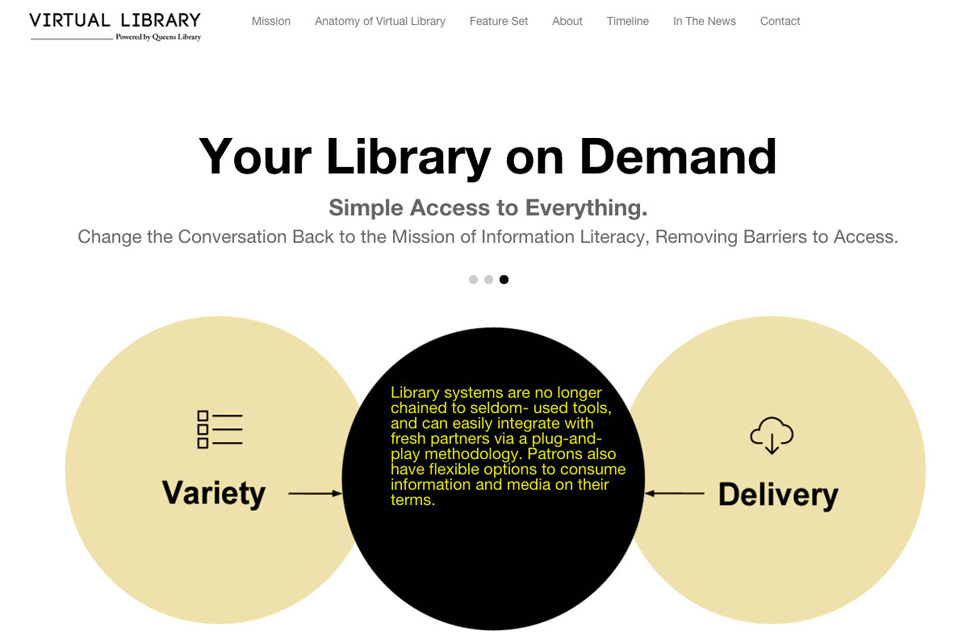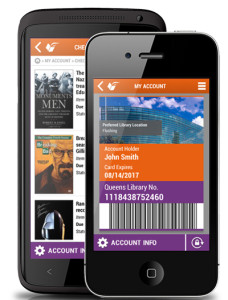
Kelvin Watson’s first experience downloading a library ebook required 19 steps. “By the time I was done, I didn’t want to read the book,” he said as part of the background leading up to the development of Queens Library’s “Discovery and Delivery” platform and its Virtual Library. Talk about getting to the digital content “pain points” quickly!
Watson joined Queens three years ago as chief innovation and technology officer under his motto of “keep calm and make it real.” Learning about the progress he and his team have made over that time was exhilarating.
Taking lessons from his time at Ingram, Borders, and the US Department of Agriculture, Watson focused on breaking down silos, retiring legacy models that no longer worked, and applying a mobile-first, user-centered approach to delivering library content and services.
Lending the library
Opportunity met necessity in 2012 when the library received 5,000 Google Nexus tablets in the wake of Superstorm Sandy. Queens was already engaged in talks with various partners about seamless digital content and service delivery. In the aftermath of the storm, Watson and his team set out to loan more than just an ebook or a device, but “the Queens Library experience”—particularly where physical facilities had been hampered or destroyed.
The tablets were equipped with a proprietary custom interface with icon-driven menus that provided curated access to library resources and programs whether connected to the internet or not. Content included ebooks and e-magazines; library programs, events, locations, and hours; account information; book lists; computer training resources; community services information; and the library catalog. How many clicks? Four or less.
On the administration side, staff can update and push fresh content to the tablet when connected via Wi-Fi, and resetting the device takes less than a minute after check-in. Any adult with ID and a library card (or child with parental permission) can check out the tablet “library” for one month, with up to three renewals. When mobile hotspot lending was added to the equation, tablet lending increased 25%.
Having it all

This means having it all—physical items, discoverability, and variety, as well as digital items, access, and delivery. But it doesn’t mean doing it all yourself. Instead, Queens sought to harness a host of applications through one interface. After the successful launch of the tablets, the library applied the same principles to a mobile app for patron use and now on standards for APIs that will extend these lessons to libraries and vendors nationwide.
Watson noted that libraries are competing with Google, Amazon, and Netflix (see also Confronting the Future [PDF]), and we can’t hope to do so without creating the kind of user experiences that retail leaders have mastered in the digital realm (simple access to everything on demand). But this doesn’t mean that technology leads the conversation. Rather, users are at the center of the digital development, as well as the in-person experience.
In fact, frontline staff are the “secret sauce” for any successful deployment. If they don’t have the needed training and belief in the tools being developed, they are unlikely to instill confidence and excitement among customers. This understanding is driving the library’s newest ambitious project—the development of a learning management system that better enables anywhere and anytime learning. Staff will be the first to test and help refine the system before it goes out more broadly.
The Queens presentation was part of a round of meetings and visits in New York City with ALA President Sari Feldman and a delegation of library leaders. Queens has developed a high-level strategy focused on the whole user library experience anytime and anywhere, as well as building agile and iterative processes to adapt to daily changes in the environment. Thankfully, Queens would like to share what it has developed and learned more broadly, and the ALA Digital Content Working Group is charged with exploring and sharing options for expanding access to digital content and overcoming barriers to access. As with all the New York meetings last week, we look forward to continuing the conversation and making real a vibrant digital library experience for all.
It was a pleasure to begin my day with Queens and end it at the Carnegie Corporation of New York with the I Love My Librarian award winners. The two gatherings provided perfect bookends for how libraries and librarians are transforming services to empower people and communities.
Updated December 8, 2015.
